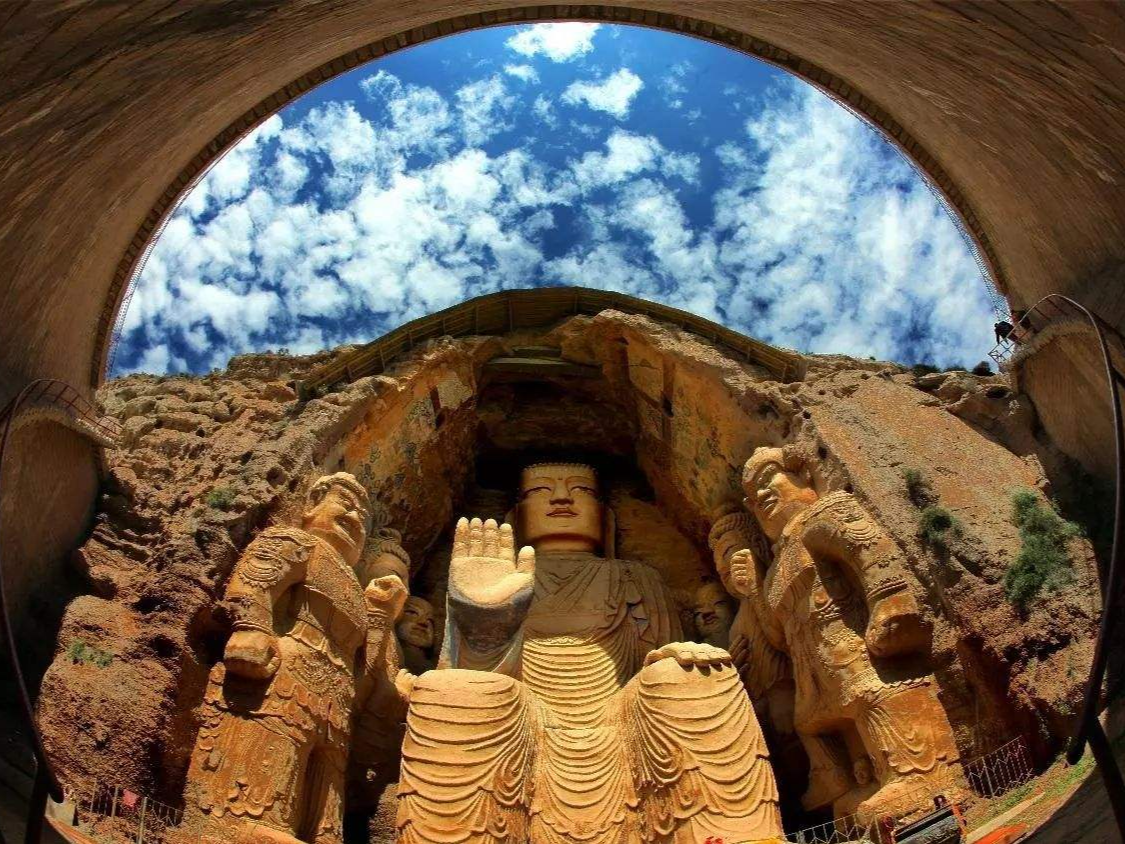
- Tiantishan Grottoes, built in Beiliang during the Eastern Jin Dynasty Sixteen Kingdoms period
As a golden section of the ancient Silk Road, the Hexi Corridor is a frontier for the exchange of Chinese and Western civilizations. It is a concentrated area of grotto art and has many spectacular grottoes. The Hexi Corridor Grottoes not only have been excavated early, have a wide distribution, gorgeous statues and exquisite murals, but also last for 1,500 years.
The northern foot of the Qilian Mountains is cut by many rivers formed by melting ice and snow, forming many river valleys with broken cliffs, and it also provides an excellent place for the excavation of grottoes. Therefore, the grottoes in the Hexi Corridor are all excavated on the cliffs through which rivers flow. Wuwei is located in the middle of Gansu Province and the eastern end of the Hexi Corridor. It is the throat zone of the Eurasian Continental Bridge and the central part of the West Longhai-Lanxin Line Economic Belt. It is the geometric center of the economic development of Lanzhou, Xining and Yinchuan, as well as the Hexi Corridor. , Logistics, capital flow, information flow most concentrated areas and important commercial distribution centers. The Tianti Mountain Grottoes in Wuwei, the site of Baita Temple, the Wuwei Confucian Temple, the Kumarajiva Temple, the Chinese tourism symbol-Ma Tingfeiyan, the remains of Xixia, etc. have played a vital role in the inheritance of Chinese civilization.

The Tiantishan Grottoes in Wuwei were built during the Juqu Mengxun period in the Northern Liang Dynasty. It has a certain influence on the Longmen Grottoes in Luoyang, Yungang Grottoes in Datong, and Mogao Grottoes in Dunhuang. It can be called the originator of Chinese caves.
From 304 AD to 439 AD (the first year of Yongxing in the Western Jin Dynasty to the reunification of the Northern Wei Dynasty), many nomads took advantage of the rebellion of the Eight Kings in the Western Jin Dynasty and weakened their national power. They established several non-Han regimes, forming a confrontation with the southern Han regime. During the period, the history was called the Five Husbands, and the Five Hus mainly refer to the five Hu people tribes of the Huns, Xianbei, Jie, Qiang, and Di. The Wuhu is the representative of the Hu people in the chaos in the late Western Jin Dynasty. In fact, the number is far from five.
In 311 AD, taking advantage of the chaos, the Huns, Xianbei, Jie, Qiang, Di and other nomadic tribe alliances launched a large-scale attack on the Central Plains, and Luoyang and Chang'an were attacked one after another. From Huaihe River in the south, Yinshan Mountain in the north, Congling in the west, East China Sea in the east, northeast to the lower reaches of the Yalu River to the north, and southwest to the east of the Lancang River, sixteen larger separatist regimes have been established one after another, namely Cheng Han (Badi) , Han, Qiang (Xianbei), Hou Zhao (Jie), Qian Liang (Han), Qian Yan (Xianbei), Qian Qin (Di), Hou Qin (Qiang), Hou Yan (Xianbei), Western Qin (Xianbei) , Houliang (Di), Beiliang (Xianbei), Nanliang (Xianbei), Nanyan (Xianbei), Xiliang (Han), Xia (Xianbei), Beiyan (Han).

In that era, the emperor took turns. Next year, when he arrives at the Jun's house, some figures of power will seize this rare historical opportunity to accumulate wealth first, then recruit troops and horses, and strive hard to become the emperor. Once the time is right, they will fight against the surrounding countries, draw a clear line of national boundaries, ascend the throne and claim the emperor, gather together, and dominate. More than a dozen countries have similar strengths, and no one can do anything about it. Fighting and fighting, fighting to and fro, hits Zhang Yanghao’s poem "Mountain Sheep•Tong Caring for the Ancients": "Xing, people suffer; perish, people suffer" Regardless of the rise and fall of dynasties, no matter which dynasty changes, and no matter which emperor is in power, only the ordinary people suffer. For more than a hundred years, various ethnic minorities and Han people in the north have established dozens of countries and regimes of different sizes and strengths on the land of China. Among them, 16 countries have existed for a long time and have great influence. The five main tribes that entered the Central Plains are composed of the five grassland ethnic minorities of the Xiongnu, Jie, Xianbei, Di, and Qiang. They are customarily called the Five Huluanhua or Wuhu Sixteen Kingdoms.
Grotto art is a kind of religious culture, based on Buddhist stories, flourished in the Wei and Jin Dynasties, and flourished in the Sui and Tang Dynasties. Grotto art is also Buddhist art. It reflects Buddhist thought and the process of its occurrence and development. The statues of Buddha, Bodhisattva, Arhat, Dharma protector, and various stories and images of Buddha's original life created by it are all based on the life image of specific people. Created. It absorbs the essence of Indian Gandhara art, integrates the traditional techniques and aesthetics of Chinese painting and sculpture, and reflects Buddhist thought and its sinicization process. It is a study of Chinese social history, Buddhist history, art history and the history of Sino-foreign cultural exchanges. Valuable information.
The Hexi Corridor is the only way for several major civilizations in the world to spread eastward or westward in history. The special location advantage makes it a central area and transit point for the spread of Buddhism. After the Yongjia Rebellion broke out in the Central Plains, to the sixteen states period when China was chaotic, the North was in turmoil, and the Hexi Corridor was not affected too much because of its remoteness, and became a haven for peace in troubled times. In Chang'an at that time, there was a song saying: "Qin Zhongchuan, blood has no wrist, only Liangzhou (Wuwei) leans on the pillars." Wuwei, Zhangye, Jiuquan, and Dunhuang in the Hexi Corridor are relatively stable and peaceful places. A large number of people have migrated here. In particular, the gentry and doctors in the west of Luoyang and Guanzhong, dignitaries, literati, literati, and skilled craftsmen migrated to the Hexi Corridor in 412 AD. At that time, the capital city of Beiliang (now Wuwei, Gansu) gathered many eminent monks, many of them People are engaged in Buddhism dissemination and classic translation.
In addition to funding the translation of Buddhist scriptures, Juqu Mengxun, the founder of the Northern Liang Kingdom, also made great efforts to build temples. At this moment, the tower of the Great Hall in Guzang City is the Buddha Kingdom on earth created by him. However, Juqu Mengxun realized that compared to civil buildings, stones are undoubtedly stronger and more durable, and that the construction of grottoes can make Buddhism last long. So he began to order people to survey the terrain around Guzang, choose a suitable location for the cave sculpture, and finally chose Tianti Mountain, a hundred miles south of the city. Perhaps Juqu Mengxun did not expect that the Tiantishan Grottoes he presided over opened up an important mode of Chinese grotto construction-the royal mode, that is, the imperial court promoted the excavation of grottoes. The two most important grottoes in the Central Plains in later generations-Yungang Grottoes and Longmen Grottoes, are also under the strong impetus of the royal family that ushered in the climax of grotto construction.

"The desert and the green sky cannot be stepped, and the mountains of the stepped mountains rise above the pavement. There are roads in the sky, and the clouds and clouds are combined, and the hidden fog and bamboo do not live. Yusai has been a barrier for thousands of years, and the springs come out of each stream. Zhenyi Qianren once dreamed, Look at the green river and low trees.” This is the description of the Tiantishan Grottoes by poets in the Qing Dynasty. The Tiantishan Grottoes are located in Dengshan Village, Zhonglu Township, about 50 kilometers south of Wuwei City. It is named because of the rugged mountain roads and the overlapping peaks and ridges, shaped like hanging ladders. The top of Tianti Mountain is snow-capped and never melts all year round; the springs in the mountains are ding-dong, vegetation is overgrown, and the scenery is beautiful. The snow-covered Tianti is one of the eight scenic spots in Liangzhou. Tiantishan Grottoes, also known as the Great Buddha Temple, was built in Beiliang during the Eastern Jin Dynasty and the Sixteen Kingdoms period. It has a history of about 1600 years. Tiantishan Grottoes is one of the earliest grottoes excavated in China, and it is also a representative of early Chinese grotto art. It is the source of Yungang Grottoes and Longmen Grottoes, and occupies an important position in the history of Chinese Buddhism.
The clear water of the Huangyang River is like a mirror, and the majestic shore of Tianti Mountain is reflected in the clear blue waves. The big Buddha in the grotto sits against the mountain, with blue waves rippling at its feet, and thin clouds entwining its body, forming a magnificent scene of mountains, water, Buddha, and clouds. From the reservoir, after passing the reservoir by boat, follow the plank road and climb to Tianti Mountain. Overlooking, the daisy-green Qilian Mountains come into view, with ridges and mountains. The top of the mountain is white, making the cyan mountain look even colder. The lake water is set against the blue sky, white clouds, and green mountains, like a warm jasper, adding a touch of beauty to this originally desolate world.
According to the Ming Dynasty’s orthodox stele, there are twenty six niches in the Tiantishan Grottoes. Qianlong’s "Wuwei County Chronicles" records: "Dafo Temple, 100 miles southeast of the city, has a stone Buddha statue, nine feet high, nine floors of the building, and Name Guangshan Temple.” This is recorded in Buddhist scriptures such as the "Fayuan Zhulin". The sculptures of the grottoes are unique, either stone or clay sculptures. Their scale is magnificent, exquisite, and diverse, comparable to the Dunhuang Mogao Grottoes. The Tianti Mountain Grottoes were created on the basis of natural caves. In October of the eighth year of Yuanxi in the Eastern Jin Dynasty (412), Mengxun moved its capital to Guzang from Zhangye and was called the King of Hexi, established official offices, repaired palaces, and built city gates. . At the same time, Liangzhou eminent monk Tan Yao and skilled craftsmen were convened to cut the mountain to open the way, excavate the Tiantishan grottoes, and build Buddha statues. Soon after his mother Che's passed away, he first carved a 5-meter-high stone statue for his mother in the cave, which looked like tears, expressing repentance.

The largest grotto in Tianti Mountain is 30 meters high, 19 meters wide and 6 meters deep. According to relevant historical records, this grotto was excavated by the Northern Liang King Juqu Mengxun between AD 412 and 439. There is a large statue of Sakyamuni in the cave, 28 meters high and 10 meters wide, standing facing the water, with his right arm stretched forward, pointing forward, sitting majestically. The big Buddha smiled, and his right hand pointed towards Moji Mountain, graceful and elegant, solemn and solemn, swallowing the haze, swallowing the universe. On both sides of the Sakyamuni there are six statues of Manjusri, Samantabhadra, Guangmu, Duowen, Kassapa, and Ananda, all of which are vivid and majestic. Large murals are painted on the north and south walls of the cave. The upper part of the south wall is a cloud-grained blue dragon; the middle part is an elephant sika deer, the elephant's back carries a smoky scroll, and the lower part is a tiger, trees and flowers. The upper part of the north wall is painted with blue dragons and double tigers, the middle part is painted with white horses, ink tigers, and linden trees, with scrolls on the horseback flashing; the lower part is painted with peony flowers. The entire wall has fresh brush touches, bright colors and vivid images. Due to wars in the past and frequent natural disasters (mainly earthquakes), the grottoes were severely damaged, especially the great earthquake in 1927, which caused devastating damage to the Tiantishan grottoes. The Guanlou and most of the caves were destroyed in an instant. Many statues were lost. The 8 caves that survived were relatively intact. The seated statue of the Buddha was safe and sound. The excavation of this cave has attracted the attention of the Buddhist community, and led the Western Regions monks one after another. They lectured in Liangzhou, translated Buddhist scriptures, and made Tiantishan Grottoes more famous.
In 439 AD, the Northern Wei Dynasty destroyed the Northern Liang Dynasty and ended the 140-year-old prosperity of the Hexi region. The once flourishing Liangzhou Buddhism and art were hit hard, and Liangzhou monks flowed out and moved 30,000 households from Guzang. To Pingcheng (Datong), there were more than 3,000 monks among them. These 3,000 monks are actually the creators of the Liangzhou model, which promoted the growing prosperity of Buddhism in the Northern Wei Dynasty. Among the craftsmen and monks who moved to Pingcheng, there is no shortage of eminent monks and mages. According to the records of "Shi Lao Zhi", "Shi Zu Ji" and "Gao Zu Ji", after Liangzhou monk Shixian arrived in Pingcheng, he took up the position of Taoist and Rentong (the official position in charge of religious affairs). Buddhist stone statues of emperors. In 460 AD, when Shi Xian died, Liangzhou monk Tan Yao succeeded him, changed his path to the Shamen Order, continued to preside over the sculpture work, and excavated Yungang Grottoes in the suburbs of Pingcheng. He completed the construction of Yungang Grottoes' representative work "Tan Yao Five Grottoes" in just a few years (460-465). The fifth cave giant Buddha is the most magnificent statue and masterpiece of Yungang Grottoes. Later, it was excavated by generations, making the Yungang Grottoes one of the largest group of grottoes in China. Afterwards, it was built one after another. For 60 years, countless sculptors carved more than 510,000 Buddha statues and flying statues in 53 caves. The most important project was completed before the capital was moved to Luoyang in the eighteenth year of Taihe (494). These magnificent and exquisite sculptures are the crystallization of the wisdom and artistic talent of sculptors, and Liangzhou monks and craftsmen have played an extremely important role. It can be seen that in terms of Buddhist culture and the art of cave temples, the Northern Liang Dynasty and the Northern Wei Dynasty have a source relationship, that is, the Northern Liang Dynasty is the source and the Northern Wei Dynasty is the flow. According to "Wei Shu • Shi Lao Zhi", the famous Longmen Grottoes at home and abroad were excavated after the Yungang Grottoes. In the eighteenth year of Taihe, Emperor Xiaowen of the Northern Wei Dynasty moved his capital to Luoyang. From then on, he went through the Eastern Wei and Western Wei, Northern Qi to the Ming and Qing Dynasties, and built a large-scale Longmen Grottoes. At the same time, he also excavated the Gongxian Grottoes and several nearby grottoes. The architectural style of Longmen Grottoes all reflects the characteristics of Tiantishan Grottoes and Yungang Grottoes. It has a strong Southern Dynasty culture and traditional Han culture in the Central Plains, as well as strong northern cultural factors.

In 1958, due to the construction of the Huangyanghe Reservoir near the Tiantishan Grottoes to irrigate 10,000 mu of grain fields downstream, in order to protect the cultural relics, the Gansu Provincial Government decided to relocate and protect some cultural relics in the caves and organized a cultural relocation protection agency with Chang Shuhong as the team leader. , Archaeologists from Dunhuang Research Institute and Gansu Provincial Museum cleaned and relocated the cave cultural relics. In addition to the Big Buddha Cave, 49 statues, more than 100 square meters of murals and 25 boxes of fragments in a small cave tens of meters above the ground were moved to the Provincial Museum for preservation. The water level was overestimated at the beginning, and in fact the reservoir does not pose a threat to the cave. In 1992, the State Administration of Cultural Heritage hosted an expert group meeting and verified that in accordance with the principle of protecting immovable cultural relics as far as possible in their original location and in-situ, they approved the restoration of the Tiantishan Grotto cultural relics at the original site and in-situ. In 2005, the State Administration of Cultural Heritage requested that this batch of cultural relics be transported back to the original site for restoration, so the batch of cultural relics was transported back to Wuwei. The Tiantishan Grottoes in Wuwei, known as the "originator of the cave", were relocated to Lanzhou due to the repair of the reservoir. These cultural relics, which have been preserved and protected by the Provincial Museum for nearly half a century, returned to their hometowns. The cultural relics are reunited and complemented each other.
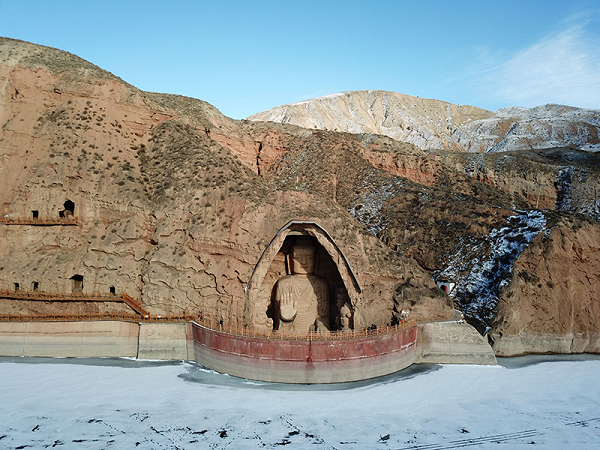
Gansu Province is a large grotto province. In addition to the famous Dunhuang Mogao Grottoes and Tianshui Maijishan Grottoes, there are more than 50 grottoes such as Zhangye Mati Temple Grottoes, Yumen Changma Grottoes, Guazhou Yulin Grottoes. The beginning of the Hexi Corridor Grottoes was not only early, but also a large time span: from the middle and late 4th century AD, from the pre-Qin to the Yuan, Ming and Qing dynasties, the time span reached 1500 years. The peak period of the construction of the Hexi Grottoes during the Sixteen Kingdoms, Northern Dynasties, Sui and Tang Dynasties coincided with the period when the political, economic and cultural center of China was in the northwest region. Whether it was a separatist regime or a unified dynasty, the rulers were vigorously strengthening their rule. Support the construction of grottoes. The sites of the Hexi Grottoes are all on cliffs and places with rivers. These grottoes are basically located in the Qilian Mountains and surrounding mountains in the southern Hexi Corridor, and most of them are located in the valleys between the mountains at the northern foot of the Qilian Mountains. In other words, the golden partner of the river and the cliff has become the standard configuration for site selection and excavation of the Hexi grottoes. The Hexi Corridor is 1,000 kilometers. From east to west, there are Shiyang River, Heihe River, and Shule River. Each water system originates from the Qilian Mountains. They not only nourish the countless businessmen, envoys, troops, and monks walking on the Hexi Corridor. It also created large and small oasis, making it rich in forests and grains, cattle and sheep in herds, and it has also become the birth base of Buddhist grottoes. Every water system must be accompanied by famous grottoes.
The four major grottoes in China are Mogao Grottoes, Yungang Grottoes, Longmen Grottoes, Maijishan Grottoes, but there is no Tiantishan Grotto in Wuwei. The general route of propagation of Buddhist grottoes in China is from Tianzhu to the Western Regions via the Hexi Corridor and then to the Central Plains. Except for the caves in Xinjiang, Mogao Grottoes should be the earliest cave art creation site in Mainland China. In fact, Mogao Grottoes were not well-known in the Northern Wei Dynasty. No impact on Yungang and Longmen Grottoes. The Mogao Grottoes were founded in the second year of Jianyuan in the former Qin Dynasty, that is, the tenth year of Liang Shengping (366). The inscription of No. 169 of the Bingling Temple Grotto is in 420 AD, and the Tiantishan Grottoes were created in 412-439. In terms of time, Tiantishan Grottoes are a bit later than Mogao Grottoes and are basically equivalent to Bingling Temple Grottoes. There are many earlier caves in Xinjiang than the Dunhuang Grottoes and the Central Plains Grottoes, but it has no direct or little influence on the Central Plains Grottoes. The peak excavation period in the history of Mogao Grottoes was when Emperor Xiaoming of the Northern Wei Dynasty (516-528). Except for the relocation of the capital to Pingcheng, some monks moved westward to Dunhuang and other places. As Emperor Xiaowen of the Northern Wei Dynasty moved to Luoyang again, a group of officials and monks Entering the Hexi Corridor with craftsmen again, the cave statues with the Han style of the Central Plains became popular in Dunhuang, making Dunhuang the center of Buddhism in Hexi after Liangzhou, and promoting the second peak of the development of the Hexi Corridor grotto culture-the rapid development of Dunhuang grotto culture This promoted the prosperity of Dunhuang Buddhism. The artistic styles of the Great Buddha of the Tang Dynasty (Cave 130) in the Dunhuang Grottoes are similar to those of the Tianti Mountain, indicating that the excavation of the Tianti Mountain Grottoes and their artistic and architectural styles directly affect the caves in Dunhuang and the Hexi Corridor. And this is 100 years after the Tianti Mountain Grottoes were excavated. Although the Tiantishan Grottoes were slightly later than the Mogao Grottoes, the Liangzhou monks who excavated the Tiantishan Grottoes, represented by Tan Yao, later became the two other major caves in mainland China, the Yungang Grottoes and the Longmen Grottoes. Technical force, Tan Yao even became the Buddhist leader of the Northern Wei Dynasty. The Tiantishan Grottoes in Wuwei greatly influenced the excavation of later generations, including Mogao Grottoes. Therefore, scholars agreed that the influence process of Chinese grottoes was: Tiantishan Grottoes— Yungang Grottoes-Longmen Grottoes-Dunhuang Grottoes, Tiantishan Grottoes are well-known as the "originator of Chinese Grottoes". Editor/He Yuting
Comment
 Praise
Praise
 Collect
Collect
 Comment
Comment
 Search
Search


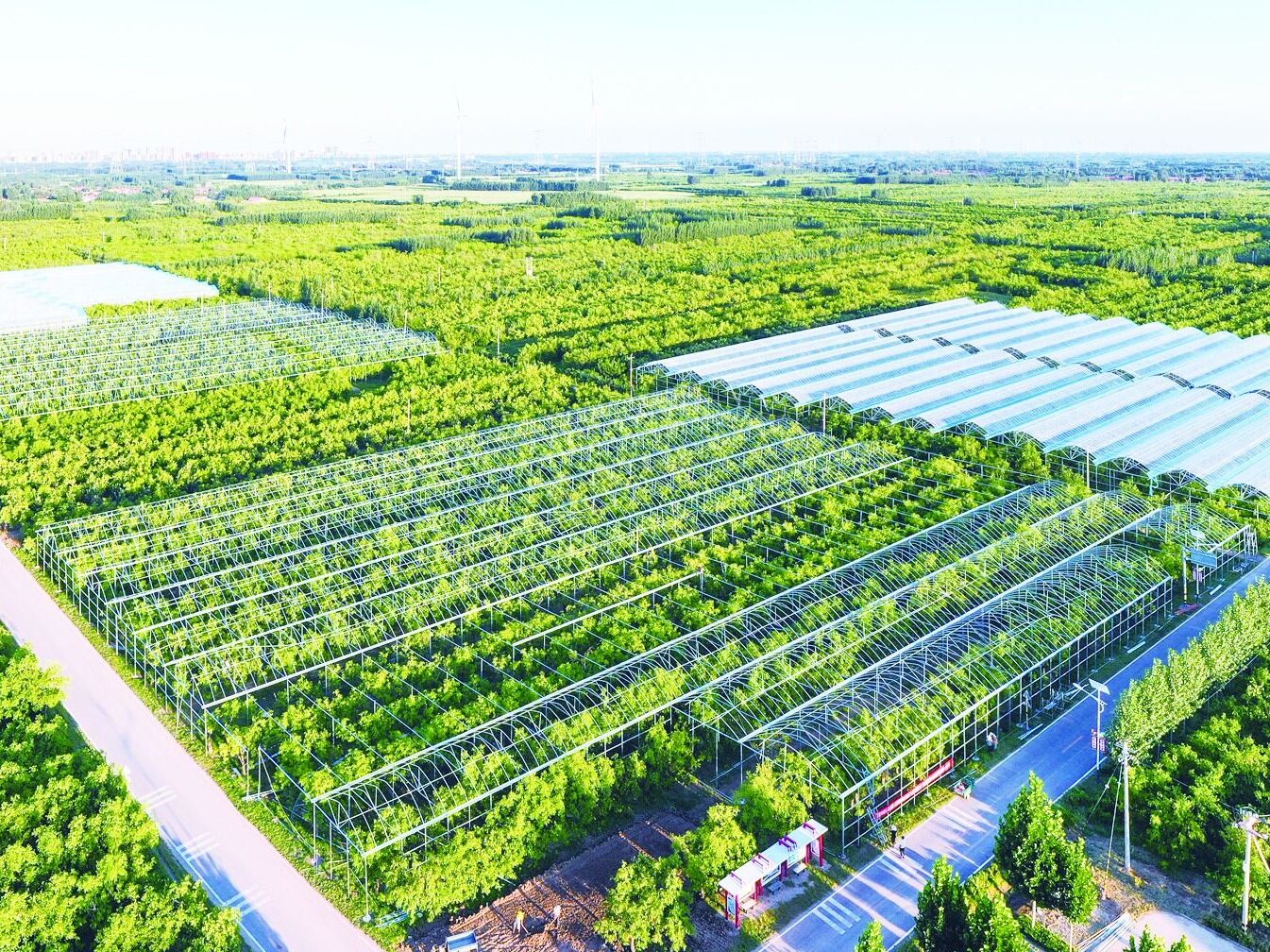
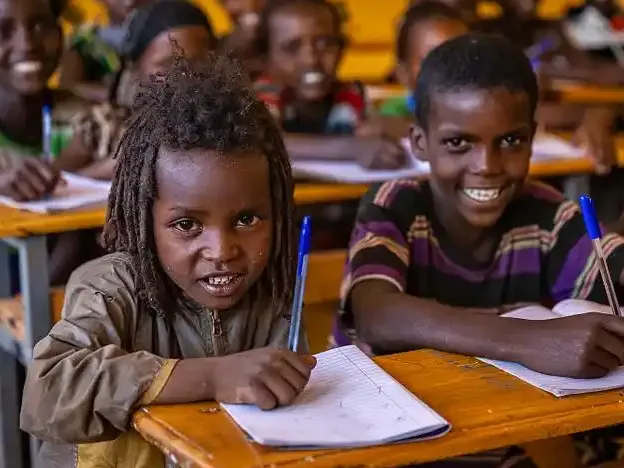
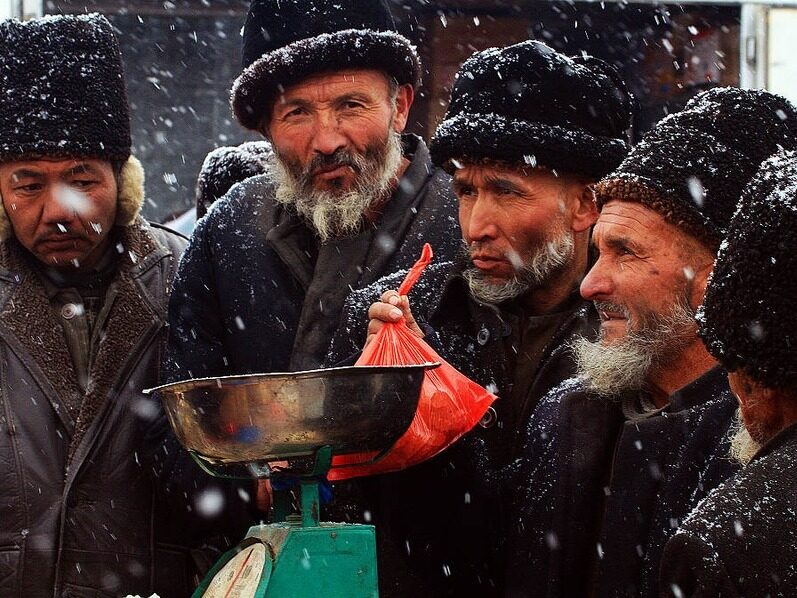
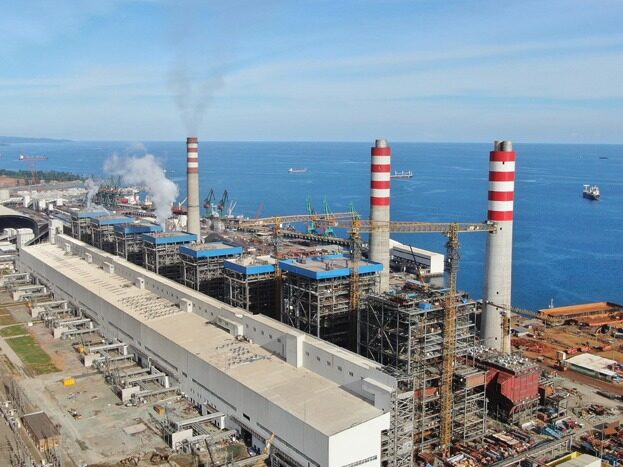

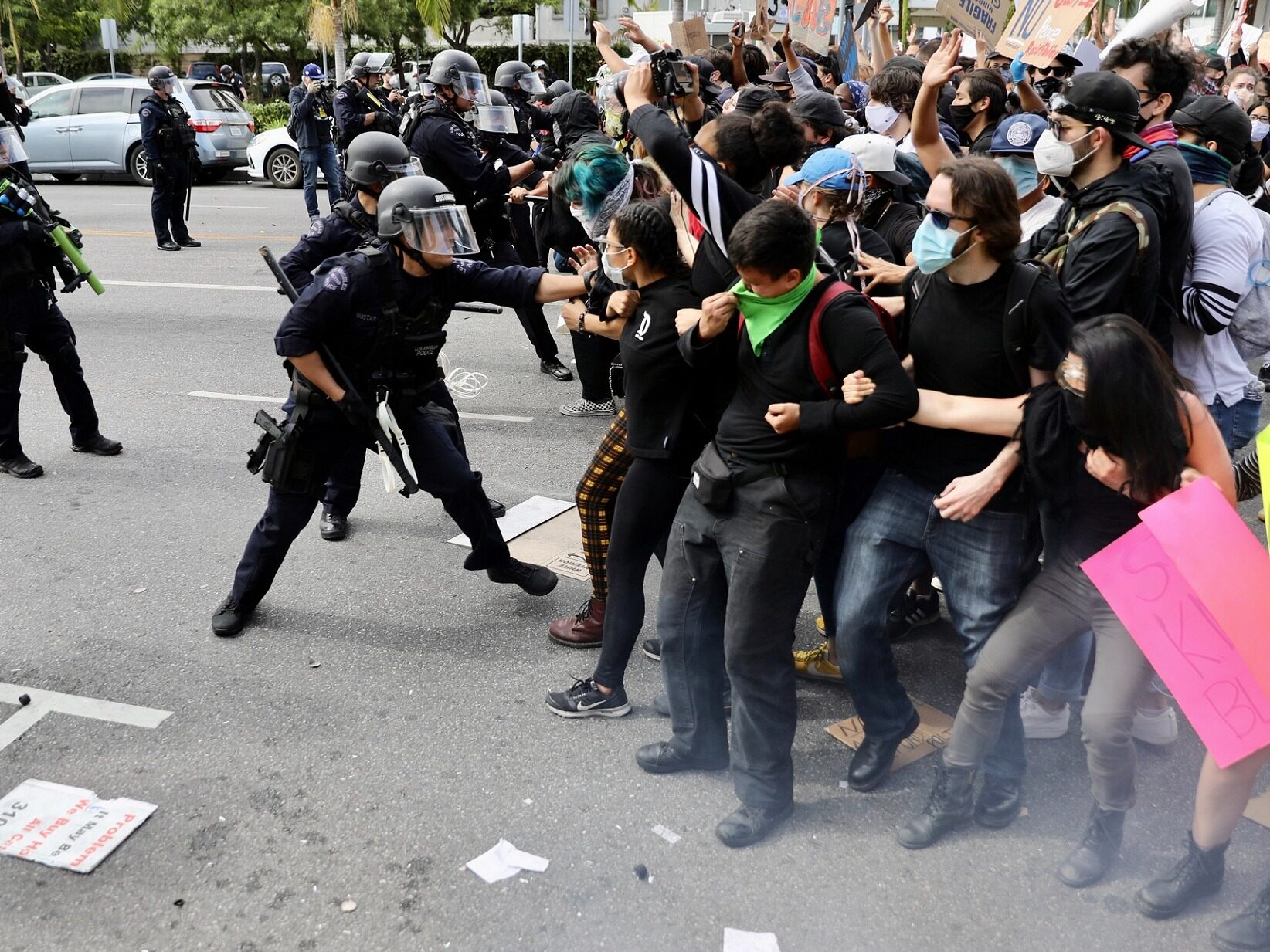






Write something~